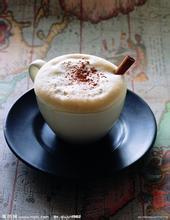Characteristics of Puerto Rican Coffee Variety producing area introduction of Fine Coffee Bean Flavor Manor
Puerto Rico covers an area of 13790 square kilometers, with mountains and hills accounting for 3/4 of the island's area. Central Mountain Range runs from east to west, and the terrain runs from the middle.
Puerto Rico
Puerto Rico
Central to the surrounding extension, from high to low, coastal plains. The highest peak, Punta Mountain, is 1338 meters above sea level. Tropical rain forest climate,[8] rainfall is sufficient, January average temperature 24℃, July average temperature 27℃. Hurricane-prone, annual average temperature 28 ° C 1898 Spanish-American War broke out, Spain lost, according to the Treaty of Paris, Puerto Rico ceded to the United States. The administrative authority of the United States over Puerto Rico first took the form of a military government. During its two years of rule over the island, the military government built schools, roads, railways, hospitals and health facilities. In 1900, the United States Congress established civilian control over the island. The President of the United States appoints the Governor, Cabinet and one of the two houses of Puerto Rico's legislature. Puerto Rico elects the other house of the legislature and a capital-based commissioner who will represent the island's interests in Washington and have a voice but no vote in Congress. Puerto Rico is also exempt from paying U.S. taxes
Puerto Rico has a history of nearly 300 years of coffee and was once one of the world's largest producing areas. According to Starbucks website, Spanish explorers brought coffee from French Louis XIV plantation to the island in 1736. Yaucono Selecto's fame, once associated with Hawaii's Kona and Jamaica's Blue Mountain Minute Bell, is also a favorite of European royal palaces and Vatican. Until the 19th century, it was the only cafe in Vienna, Paris and Madrid.
But today, Puerto Rico coffee is rarely seen or heard of outside the island. Even Coca Cola, its major shareholder, does not actively promote it. Instead, it mixes coffee from Puerto Rico with Colombia, Brazil, Mexico, Costa Rica and all parts of the Dominican Republic. The decline of Puerto Rico coffee industry has a lot to do with its embarrassing economic and political situation. During the Spanish-American War, the United States had established a strong and lasting coffee trade treaty with Brazil, a coffee power, and did not give much consideration to Puerto Rico, which had just been won. Moreover, the economic purpose of the United States in the Caribbean is mainly concentrated in the sugar industry, which also makes the local sugar cane production so prosperous that the small coffee retail investors have no way to fight, and the coffee manufacturers that can survive have to merge again and again to retain their strength. The quality of local varieties is said to be affected as a result.
Puerto Rico doesn't even have enough coffee for domestic consumption these days. It needs to import green beans from other places for roasting, so we don't know how much of the coffee we buy is picked on the island.
But the shortage of coffee on the island is not entirely due to the decline in production. Because of closer ties with the United States, few locals are willing to engage in coffee picking. According to records, a quarter of the coffee grown on trees every year is wasted because coffee farmers go to work in the United States. Those who remain, because of minimum wage laws, government subsidies, and other social welfare reasons, are also reluctant to do the work of bending over all day in the hot sun on the big slope. At last count, the island's population was estimated at 3.9 million, compared with 4.2 million in the mainland United States, Puerto Rico. No wonder recently the state government is weighing the use of prisoners to pick coffee beans. But no one knows how effective the inmates who prefer to stay in air-conditioned cells are.

Important Notice :
前街咖啡 FrontStreet Coffee has moved to new addredd:
FrontStreet Coffee Address: 315,Donghua East Road,GuangZhou
Tel:020 38364473
- Prev

Faintly fruity Dominica Coffee Variety characteristics of Fine Coffee
In December 1492, Christopher Columbus arrived on Hispaniola on his first voyage. On his second voyage there in 1493, Santo Domingo became the capital of the island. [3] thousands of Tainos were demoted to slavery and engaged in gold mining. Due to a series of oppression, hunger and disease, by 1535, the Tino had only 60,000 left. 1501, Spain
- Next

Introduction of high-quality coffee beans in Uganda coffee flavor and taste manor producing area
In the 1870s, British colonists attempted to annex all parts of Uganda, which was thwarted by the Kingdom of Buniolo. At the end of the 1970s, the Anglo-French Christian Church went to the Kingdom of Buganda to preach. They interfered in politics and caused sectarian strife. Years of war led to the rapid decline of the Kingdom of Buganda and the people of all parts of Uganda tenaciously resisted the British aggression. In 1893, Britain sent troops to occupy Bunio.
Related
- Detailed explanation of Jadeite planting Land in Panamanian Jadeite Manor introduction to the grading system of Jadeite competitive bidding, Red bid, Green bid and Rose Summer
- Story of Coffee planting in Brenka region of Costa Rica Stonehenge Manor anaerobic heavy honey treatment of flavor mouth
- What's on the barrel of Blue Mountain Coffee beans?
- Can American coffee also pull flowers? How to use hot American style to pull out a good-looking pattern?
- Can you make a cold extract with coffee beans? What is the right proportion for cold-extracted coffee formula?
- Indonesian PWN Gold Mandrine Coffee Origin Features Flavor How to Chong? Mandolin coffee is American.
- A brief introduction to the flavor characteristics of Brazilian yellow bourbon coffee beans
- What is the effect of different water quality on the flavor of cold-extracted coffee? What kind of water is best for brewing coffee?
- Why do you think of Rose Summer whenever you mention Panamanian coffee?
- Introduction to the characteristics of authentic blue mountain coffee bean producing areas? What is the CIB Coffee Authority in Jamaica?

